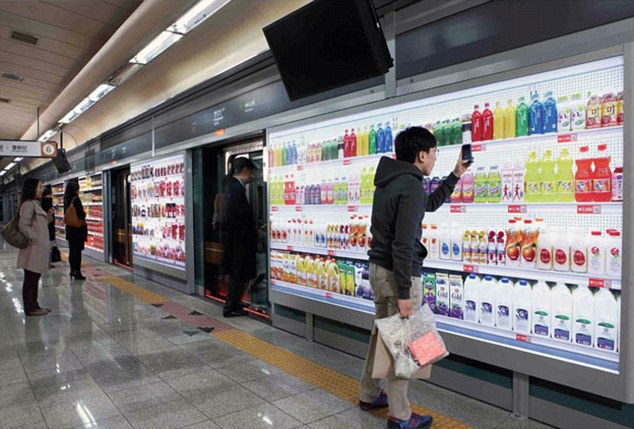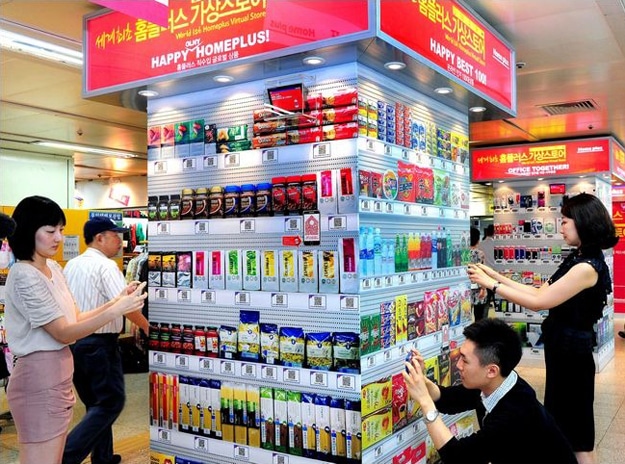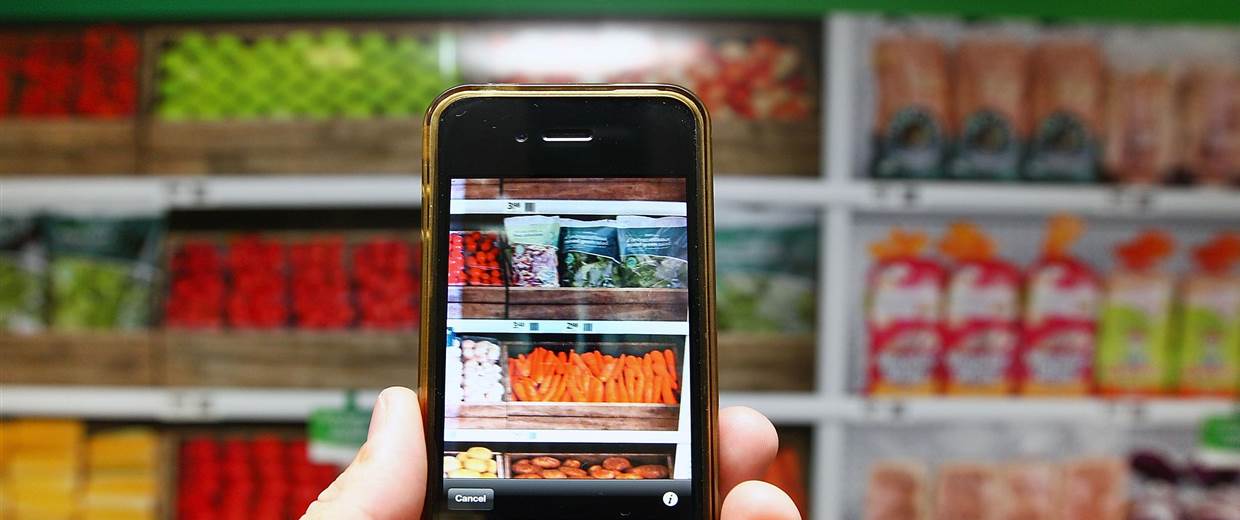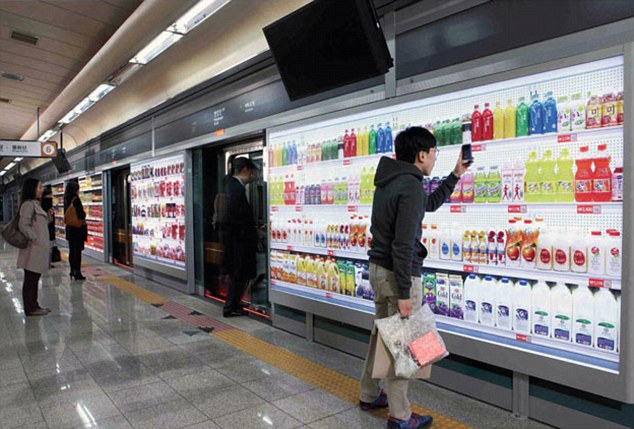Virtual supermarkets vs online ones, what’s the difference?
How about doing your daily shopping while  waiting at a train/metro station? Virtual supermarkets in busy metro stations and bus stops in Korea, where you can see posters with shelves filled with products, located on the walls of the dock or at the station, has become a reality. In a country where free time is minimal, Koreans warmly welcomed this initiative.
waiting at a train/metro station? Virtual supermarkets in busy metro stations and bus stops in Korea, where you can see posters with shelves filled with products, located on the walls of the dock or at the station, has become a reality. In a country where free time is minimal, Koreans warmly welcomed this initiative.
By using their smartphones, consumers scan the QR codes of the products they want to buy and at the same time they are added to their cart. Later in the day they schedule their delivery as well.
The process is as simple as that:
- Download the application on your smartphone
- Scan the QR code of the products you want to buy
- Products are stored on your online shopping cart
- You can pay online as soon as you finish your shopping
- You can schedule the desired delivery time at your doorstep
In Korea, the virtual  supermarket program was originally used as a pilot one, and after the successful completion, there are thoughts for promoting the same concept in Britain.
supermarket program was originally used as a pilot one, and after the successful completion, there are thoughts for promoting the same concept in Britain.
During that period, Korea’s Internet-based sales boosted 130%, while a 76% increase in new membership occurred. The objective of virtual supermarkets is to bring stores close to consumers. The records from the app indicate that the top shopping hours are 10 am and 4 pm when consumers are on their way to their jobs or leave their workplace via public transport.
“Grocer” magazine claims that the “beauty” of virtual supermarkets compared to the online ones is that they offer the physical experience – market contact to an extent, which consumers still prefer according to statistical measurements made by an advertising agency on a sample of 2000 consumers. On top of that, 59% of the respondents rate their experience in physical stores dramatic or slightly better than online shopping.
The secret to the success of this pilot project in Korea is that the virtual supermarket posters are designed to look like real shelves and corridors of the shops and thus the experience is more user-friendly.
the virtual supermarket posters are designed to look like real shelves and corridors of the shops and thus the experience is more user-friendly.
Consumers, however, agree that if virtual supermarket is a combination of online and real supermarkets, it is definitely the revolution of shopping and hence they prefer this way of buying.

